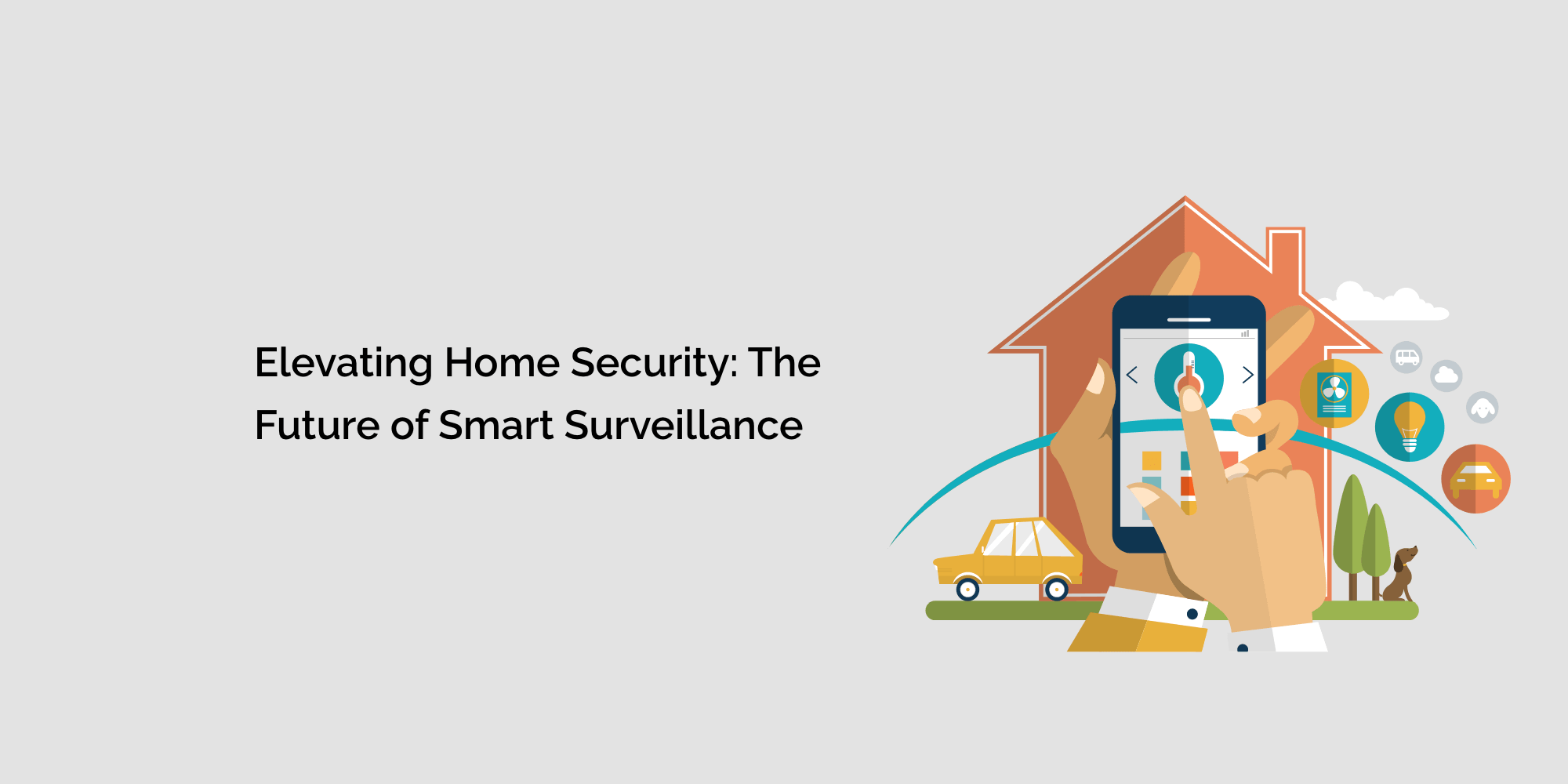In an age where technological advancements are reshaping every facet of our lives, it comes as no surprise that home security is undergoing a transformation as well. Gone are the days when a simple lock and key were sufficient to keep our homes safe.
The emergence of smart surveillance systems has ushered in a new era of home security, offering homeowners unprecedented control, convenience, and peace of mind.
In this blog, we'll delve into the world of smart surveillance, exploring its evolution, the latest trends, benefits, potential concerns, and the exciting future that lies ahead.
The Evolution of Home Security
Traditional home security systems, although effective in their time, were limited in their capabilities. They relied on manual intervention and reactive responses to potential threats.
However, as technology evolved, so did the possibilities for safeguarding our homes. The transition from analog to digital marked a turning point, enabling the creation of more sophisticated and interconnected security solutions.
The Rise of Smart Surveillance Systems
Smart surveillance systems represent a monumental leap forward in home security. These systems integrate advanced technologies such as artificial intelligence (AI), internet of things (IoT) connectivity, and cloud computing to create a network of devices that work seamlessly together to protect your home.
Key Components of Smart Surveillance Systems
-
IP Cameras: Internet Protocol (IP) cameras form the foundation of smart surveillance. These cameras capture high-resolution video footage and transmit it over the internet, enabling homeowners to monitor their property remotely.
-
AI-Powered Analytics: One of the most significant advancements in smart surveillance is the integration of AI-powered analytics. These algorithms can detect and analyze movement, distinguish between humans, animals, and objects, and even recognize specific individuals over time.
-
IoT Integration: Smart surveillance systems often include various sensors and devices that can communicate with each other and with the homeowner's smartphone or computer. This enables real-time alerts and notifications in case of any unusual activity.
-
Cloud Storage: Storing recorded footage in the cloud offers several advantages, including accessibility from anywhere, redundancy, and protection against data loss due to device damage.
Current Trends in Smart Surveillance
-
Remote Monitoring: One of the primary advantages of smart surveillance is the ability to monitor your home remotely. Whether you're at work, traveling, or simply out for the evening, you can keep an eye on your property using a smartphone app.
-
Two-Way Communication: Many modern smart cameras come equipped with two-way audio communication, allowing homeowners to speak to visitors or potential intruders through the camera's built-in speakers.
-
Integration with Other Smart Devices: Smart surveillance is becoming increasingly integrated with other smart home devices, such as smart door locks, motion sensors, and lighting systems. This integration enhances overall security by creating a cohesive and responsive environment.
-
Facial Recognition: Advanced AI algorithms can now recognize familiar faces, giving homeowners the ability to receive personalized alerts when recognized individuals, like family members or trusted friends, are detected.
Benefits of Smart Surveillance Systems
-
Enhanced Security: Smart surveillance provides a higher level of security than traditional systems, thanks to real-time alerts, continuous monitoring, and intelligent analytics.
-
Deterrent Effect: Visible cameras and smart security signs can act as deterrents, discouraging potential intruders from attempting to breach your property.
-
Data-Driven Insights: The data collected by smart surveillance systems can provide valuable insights into your household's activity patterns, helping you make informed decisions about security measures and routines.
-
Remote Access: The ability to monitor your home remotely gives you peace of mind and enables you to respond promptly to any suspicious activity, even if you're miles away.
-
Insurance Benefits: Many insurance companies offer discounts to homeowners who have smart surveillance systems installed, as they reduce the risk of theft and property damage.
Potential Concerns and Privacy Issues
While smart surveillance systems offer numerous benefits, they also raise important concerns about privacy, data security, and potential misuse. As these systems collect vast amounts of personal data and video footage, it's crucial for homeowners and manufacturers to address these issues responsibly.
The Future of Smart Surveillance
The future of smart surveillance holds even more exciting possibilities. As technology continues to evolve, we can expect to see the following developments:
-
Predictive Analytics: Advanced AI algorithms will be able to predict potential security threats based on historical data, enabling homeowners to take preventive measures.
-
Biometric Recognition: Smart cameras could incorporate biometric recognition features, such as fingerprint or iris scanning, to further enhance security and ensure that only authorized individuals gain access.
-
Drone Integration: Drones equipped with cameras and AI could provide aerial surveillance, giving homeowners a comprehensive view of their property from different angles.
-
Gesture and Emotion Recognition: Cameras could become adept at recognizing gestures and even emotions, enabling more nuanced interactions and responses.
-
Ecosystem Integration: The integration of smart surveillance with broader smart home ecosystems will continue to grow, resulting in more seamless and intelligent security solutions.
-
Ethical Considerations: As technology becomes more ingrained in our lives, ethical considerations around surveillance, consent, and data usage will become increasingly important topics of discussion.
Conclusion
Smart surveillance has revolutionized the way we approach home security. With its integration of AI, IoT, and cloud technologies, homeowners now have access to advanced tools that provide a higher level of control, convenience, and protection.
As the future unfolds, we can expect smart surveillance systems to become even more sophisticated, predictive, and integrated into our daily lives. While reaping the benefits of these advancements, it's crucial for us to strike a balance between security and privacy, ensuring that our homes remain sanctuaries in the age of smart living.








